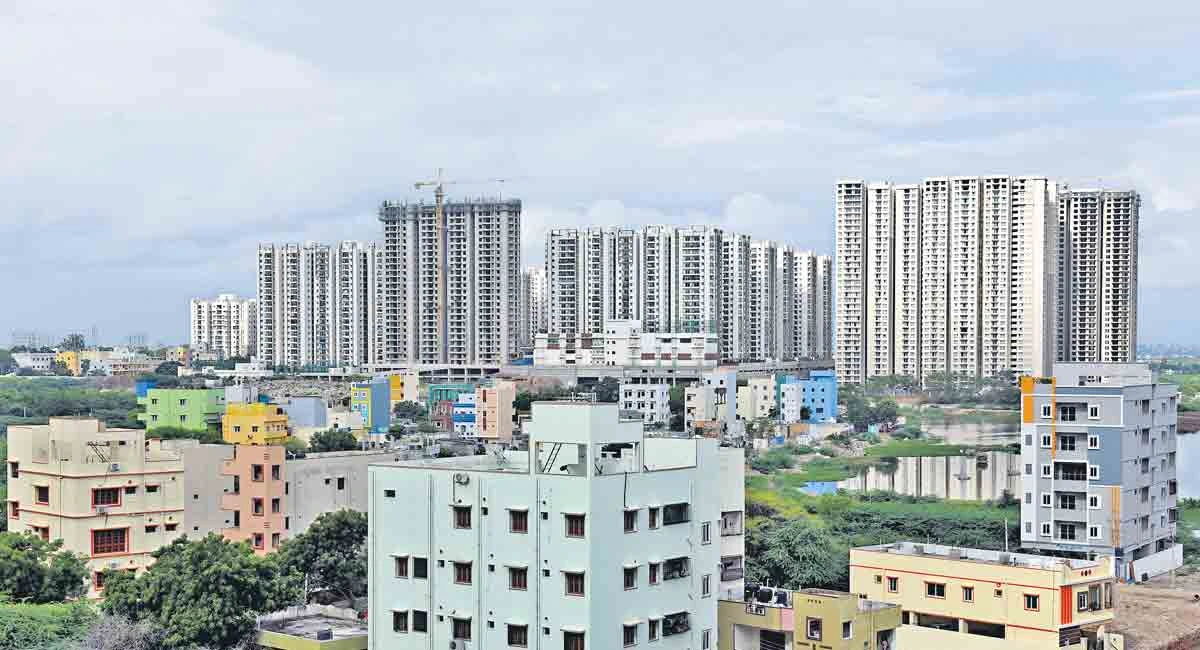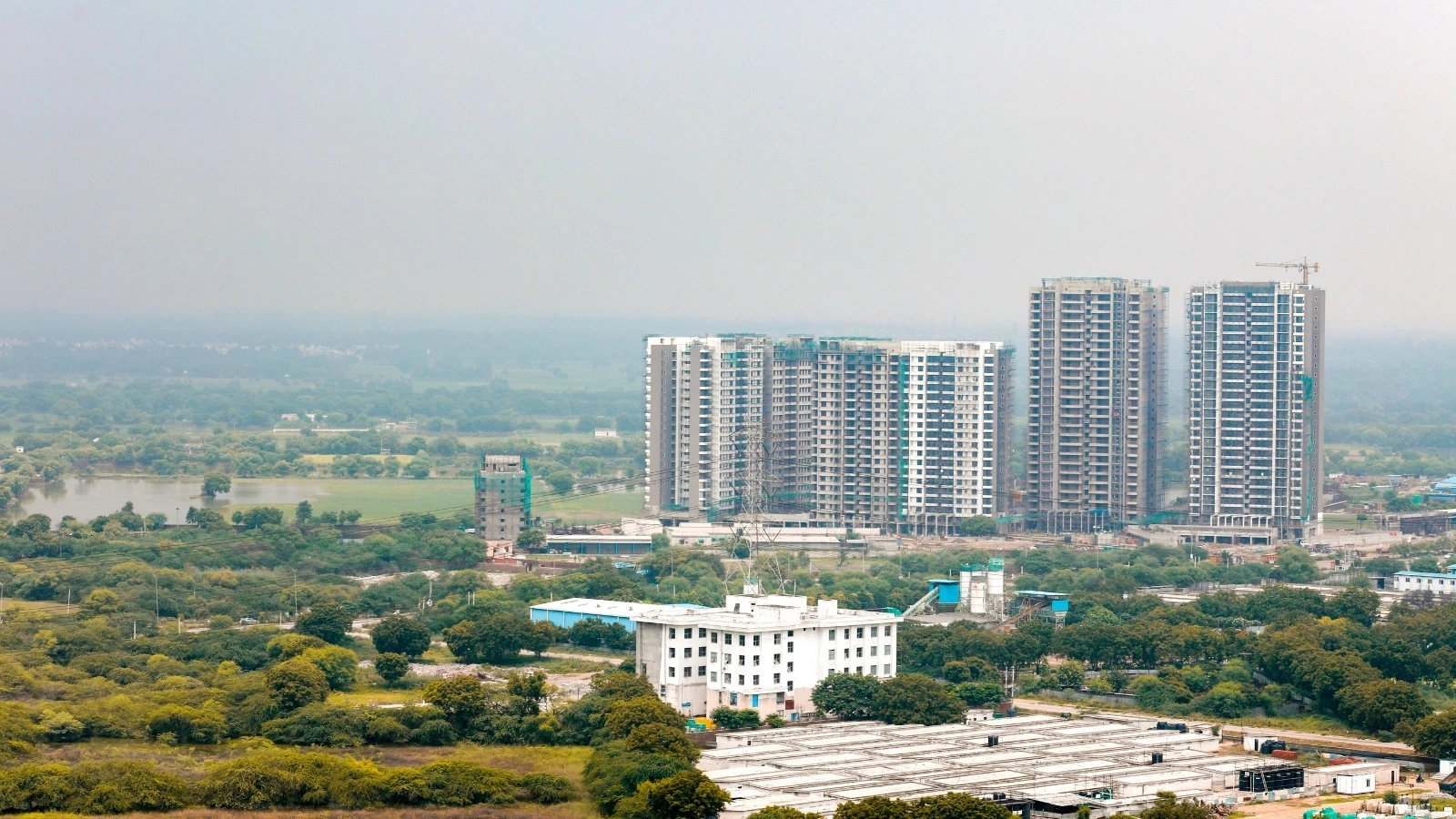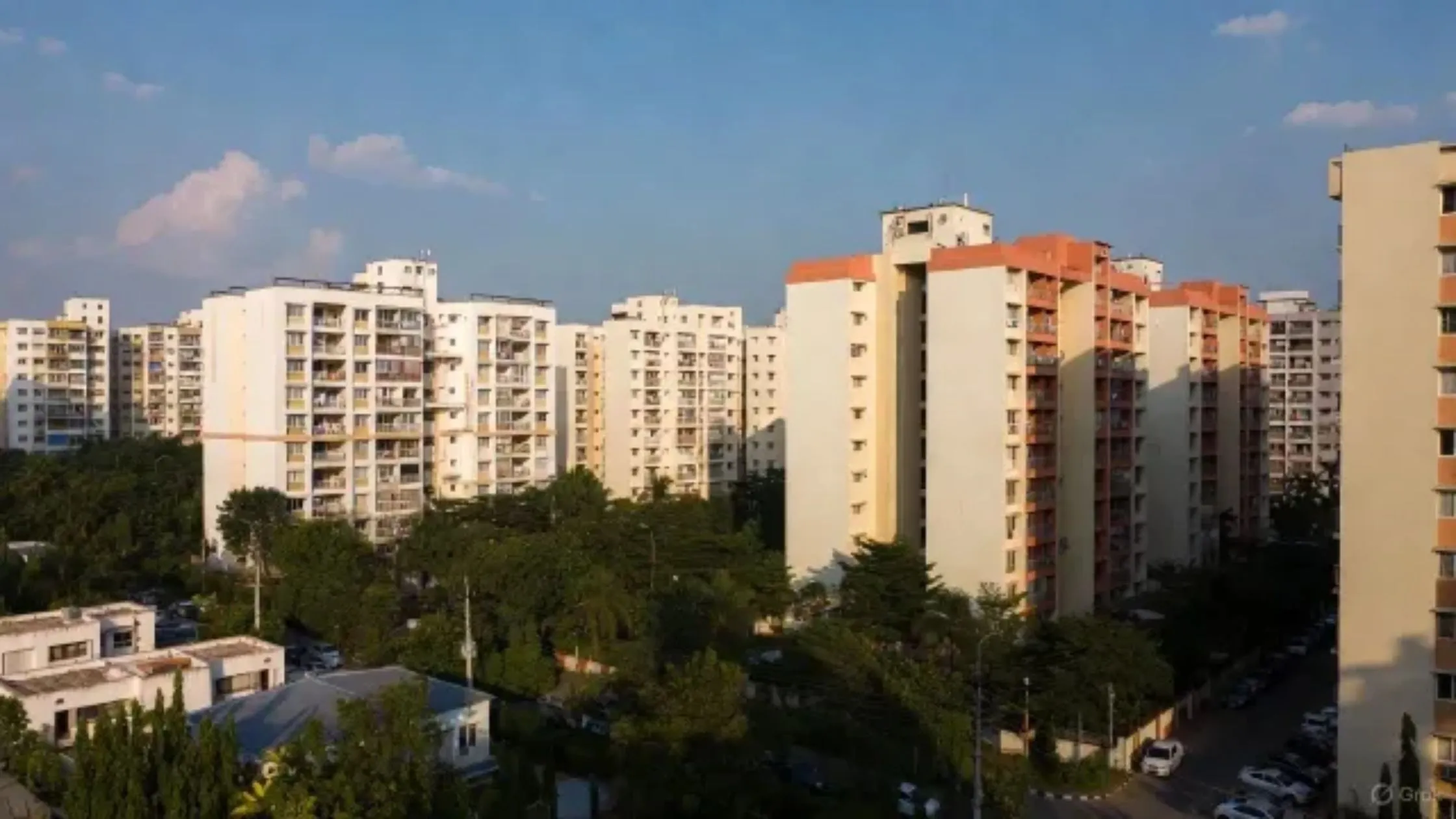Table of Content
The Indian real estate market is no stranger to dynamic changes and 2024 proves to be no exception, reports Anaroc, one of the country's leading real estate consultancies. Revealing a complicated picture for this year Residential sales in the top seven cities fell a modest 4% compared to 2023, but market values rose an impressive 16% to Rs 568 billion.
This integrated display paints a stunning picture of a region that continues to struggle with challenges. At the same time, it demonstrates flexibility and adaptability. Let’s explore the factors driving these trends in more detail. City level efficiency and what will happen in the future
The Numbers That Define 2024
The volume of residential sales was 459 billion units in 2024, down 4% from the 476 billion units sold in 2023. However, the value of these transactions increased significantly from INR 488 billion to INR 568 billion. year, which highlights the role of rising real estate prices. Meanwhile, larger print and unit sizes.
Another important indicator of market health. New housing forecasts also dropped 7% from 445,000 units in 2023 to 412,000 units this year. The median house price rose 21% from ₹7,080 per square foot in 2023 to ₹8,590 per square foot in 2024.
Also Read: By 2030, Millennials & Gen Z Will Represent 60% of New Homebuyers in India
City-Wise Breakdown of Housing Sales
The performance across the top seven cities—Mumbai Metropolitan Region (MMR), Delhi-NCR, Bengaluru, Pune, Hyderabad, Chennai, and Kolkata—reveals a mosaic of trends:
Mumbai Metropolitan Region (MMR)
- Sales Volume: Increased marginally by 1% to 1.55 lakh units.
- Market Insights: MMR continued to dominate the market with the highest sales volume among all cities. The region's robust infrastructure development and employment opportunities helped sustain demand.

Delhi-NCR
- Sales Volume: Decreased by 6%, from 65,625 units in 2023 to 61,900 units in 2024.
- Price Growth: Delhi-NCR experienced the highest price surge of 30%, with prices rising from ₹5,800 per sq. ft. in 2023 to ₹7,550 per sq. ft. in 2024.
Bengaluru
- Sales Volume: Increased by 2%, rising from 63,980 units to 65,230 units.
- Market Insights: The city’s steady demand stems from its status as India’s IT hub, coupled with an increasing preference for larger homes.
Pune
- Sales Volume: Decreased by 6%, from 86,680 units in 2023 to 81,090 units.
- Challenges: Rising property prices and limited new launches contributed to the decline.
Hyderabad
- Sales Volume: Decreased by 5%, from 61,715 units to 58,540 units.
- Market Insights: The city remained attractive for buyers seeking modern infrastructure and employment hubs but faced setbacks due to fewer launches.
Chennai
- Sales Volume: Declined sharply by 11% to 19,220 units from 21,630 units.
- Price Trends: Despite falling sales, the city witnessed a modest rise in new project launches.
Kolkata
- Sales Volume: Experienced the steepest drop of 20%, with sales reducing to 18,335 units from 23,030 units.
- Market Insights: Limited new supply and a preference for ready-to-move properties may have dampened Kolkata’s performance.
Also Read: Top 9 Best Wall Putty Brands in India for Perfect Walls in 2025
Why Did Sales Volume Decline?
The decline in housing sales volume in 2024 can be attributed to several interconnected factors:
1. Election Impact
The general and assembly elections held this year caused delays in project approvals, significantly impacting the launch of new housing projects. Developers hesitated to introduce new inventory amidst the uncertainty, leading to a reduced supply pipeline.
2. Rising Property Prices
A 21% hike in average housing prices made homes less affordable for many buyers. Increased costs of land, labor, and raw materials such as steel and cement pushed up property rates across all cities.
3. Limited New Launches
With a 7% drop in new housing launches, prospective buyers had fewer options, which likely contributed to the decline in sales.
4. Shifting Preferences
Buyers increasingly sought larger homes, influenced by work-from-home trends and lifestyle changes. However, this shift also resulted in higher costs, limiting affordability for a segment of the market.
Price Surge: A Dominant Theme of 2024
The price surge across all seven cities was one of the most defining aspects of the year. Delhi-NCR led the pack with a whopping 30% increase in average prices, followed by other cities that saw price hikes between 13% and 30%.
This trend was primarily driven by:
- High Input Costs: Rising expenses for raw materials and labor pushed up overall construction costs.
- Strong Demand: Despite the sales dip, demand for quality housing in key locations remained resilient.
- Developer Strategies: Many developers focused on premium and mid-segment projects, targeting buyers willing to pay a premium for amenities and location advantages.

New Project Launches: A Mixed Scenario
While the overall number of new launches dropped by 7%, the trend varied across cities:
- Delhi-NCR saw a significant 44% increase in new project launches, driven by improved demand and developer confidence.
- Chennai recorded a modest 4% rise in launches.
- Other cities, including Pune, Hyderabad, and Kolkata, experienced declines ranging from 15% to 28%, reflecting cautious developer sentiment.
A Look at the Total Market Value
One encouraging factor in 2024 is the increase in the total market value of residential sales. The 16% increase from ₹4.88 billion in 2023 to ₹5.68 billion in 2024 is a direct result of:
- Higher property prices
- Larger unit size Spacious home meets buyers' needs.
- Continued interest in high-priced real estate in metropolitan areas
What to Expect in 2025?
As we look ahead, 2025 is expected to bring a more balanced growth path for the housing sector:
1. Stabilizing Prices
The price surge in 2024 is likely to be moderate. It is expected that the average price will be stable. But investment spending and strong demand will guarantee stable growth.
2. Increased New Launches
New forecast increases Developers can focus on launching new projects to meet the inherent demand from 2024. Cities like Delhi-NCR and Bangalore are likely to lead the way.
3. Regulatory Improvements
Regulatory reform Because the election is behind us. The approval process for new projects is expected to be faster. and reduce bottlenecks in new supply.
4. Demand for Larger Homes
The need for a larger home Driven by hybrid working styles and changing lifestyle needs, The trend of buyers seeking larger homes will continue. Developers are likely to respond with more ambitious proposals in the price segment.
2024 is when the Indian real estate market will diversify. Although sales volumes were slightly affected, the overall value of the transaction rose to a new level. This reflects the flexibility and adaptability of the sector. price increase Decreasing forecast and changing buyer needs It is considered an important trend of the year. By 2025, the market has a more stable growth trend. It has a stronger supply pipeline and moderate price growth. For home buyers and investors Understanding these changing trends will be key to making informed decisions in the coming year.
Also Read: 18% GST on FSI : A Move That Could Skyrocket Housing Costs





_1765522271.webp)

Ans 1. Sales volumes dropped due to election delays, rising property prices, limited new launches, and shifting buyer preferences for larger homes.
Ans 2. Delhi-NCR saw the highest price increase, with a 30% rise in average property prices.
Ans 3. The total market value of residential sales increased by 16%, from ₹488 billion in 2023 to ₹568 billion in 2024.
Ans 4. Higher input costs, resilient demand, and a focus on premium projects contributed to the 21% average price hike.
Ans 5. Bengaluru and MMR recorded slight increases in sales volumes, while cities like Delhi-NCR and Pune experienced declines.
Ans 6. Stabilized prices, increased new launches, regulatory reforms, and continued demand for larger homes are expected to drive balanced growth in 2025.
Ans 7. Delayed project approvals due to elections and cautious developer sentiment led to a 7% drop in new housing launches.
Ans 8. Buyers increasingly preferred larger homes due to hybrid work models and evolving lifestyle needs, contributing to higher property costs.
Ans 9. Tier I cities like Delhi-NCR and MMR led the market with premium projects and robust infrastructure, driving up transaction values.
Ans 10. Yes, 2025 is expected to bring stability with moderate price growth, faster project approvals, and an improved supply pipeline.